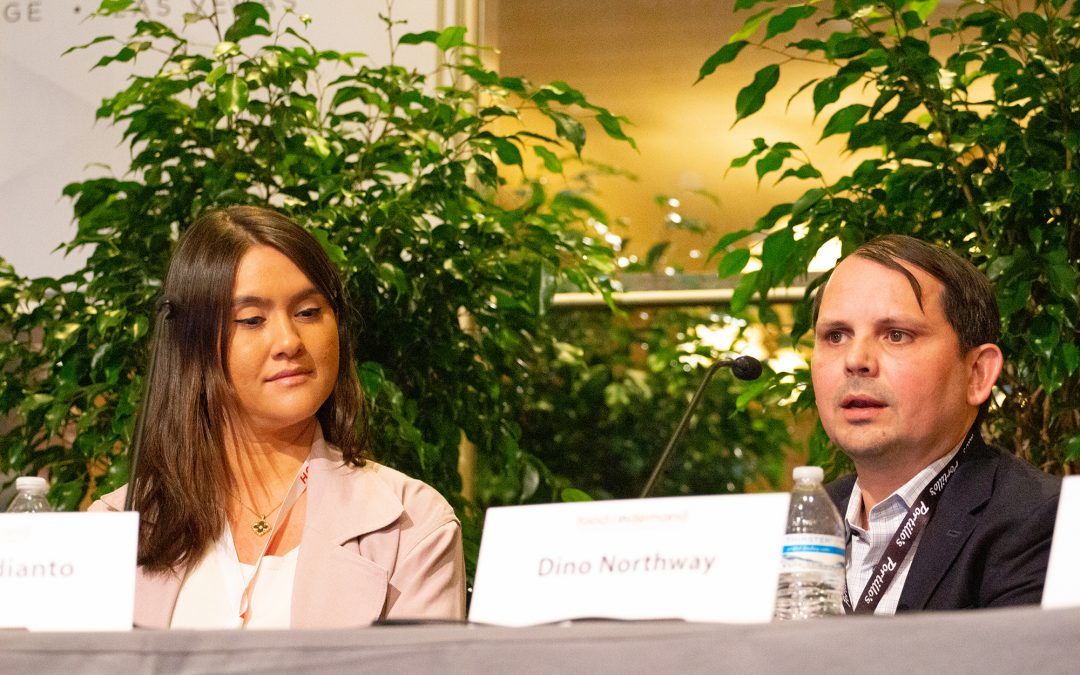As more options proliferate, a growing number of restaurants are employing hybrid and native delivery options to tailor their off-premises strategy to their unique circumstances. This digitization of the delivery process was explored by restaurant and technology industry representatives at this year’s Food On Demand Conference.
This panel discussion featured Cartwheel CEO Alex Vasilkin, Portillo’s Director of Off-Premise Dino Northway, Lyft Head of Delivery Justin Paris and DoorDash GM Sophia Budianto. Focusing on both hybrid and native delivery styles, the panel was moderated by Franchise Times Editor in Chief Laura Michaels.

Lyft Head of Delivery Justin Paris
The hybrid model mentioned during the panel refers to businesses utilizing both its own managed delivery fleet and third-party delivery services. Native delivery models, meanwhile, are businesses with completely in-house delivery, allowing customers to order directly through the brand’s digital platform.
According to Cartwheel’s Vasilkin, whose company offers delivery platform services, each restaurant he works with requires something a bit different for an optimal fit.
“Overall, there is no one-size-fits-all approach,” he said. “On one end of the spectrum, we have those who will never have delivery drivers, but want to deliver large catering orders. On the other end, you have customers who say ‘we’ve been delivering for 20 years and we’re going to keep doing that, but we still have overflow. When that overflow happens, we want to send that 3 percent or 5 percent of orders to DoorDash.’ And then there are some in between doing it 50/50.”
Because of the spectrum, Vasilkin added, “When we start working with restaurant brands, the No. 1 thing we do is ask ‘how do you want to see this work’ and we customize it on a location-by-location basis.”
In the case of ride-share giant Lyft making new restaurant partnerships, Paris said the company test runs its delivery services before it fully launches.
“When we look at outsourcing food delivery, there are a lot of opportunities for things to go wrong,” Paris said. “Before we really look to scale a partnership and roll it out to all locations, we make sure that in the first couple of cycles we go through we have both parties deeply focused on getting things right.”
Those things range from pick-up locations to order ready times. Once they’re well established, Paris said the delivery services are scaled up rapidly.
“The integration has to work,” Northway said. “We want any partner we’re working with to be customer centric. Not just for our guests, but also for us. So, it was very important that we were going to have enterprise-like service and response when things go wrong. Things go wrong all the time, so we need partners ready to respond to that.”
“Flexibility is key,” Budianto said during her time on the panel. “Especially right now with labor shortages being a real thing that our merchants are dealing with. Whether a merchant wants to do self-delivery or a hybrid model where they utilize us, the point is we have a number of different products allowing them to explore all of those options.”
That flexibility exists with Cartwheel, too, as Vasilkin said his company is always evolving.
“We have weekly meetings and we try to hear what operators say,” Vasilkin said. “We sit down with restaurant operators and delivery drivers. It’s a never-ending process. Our product is never complete.”


